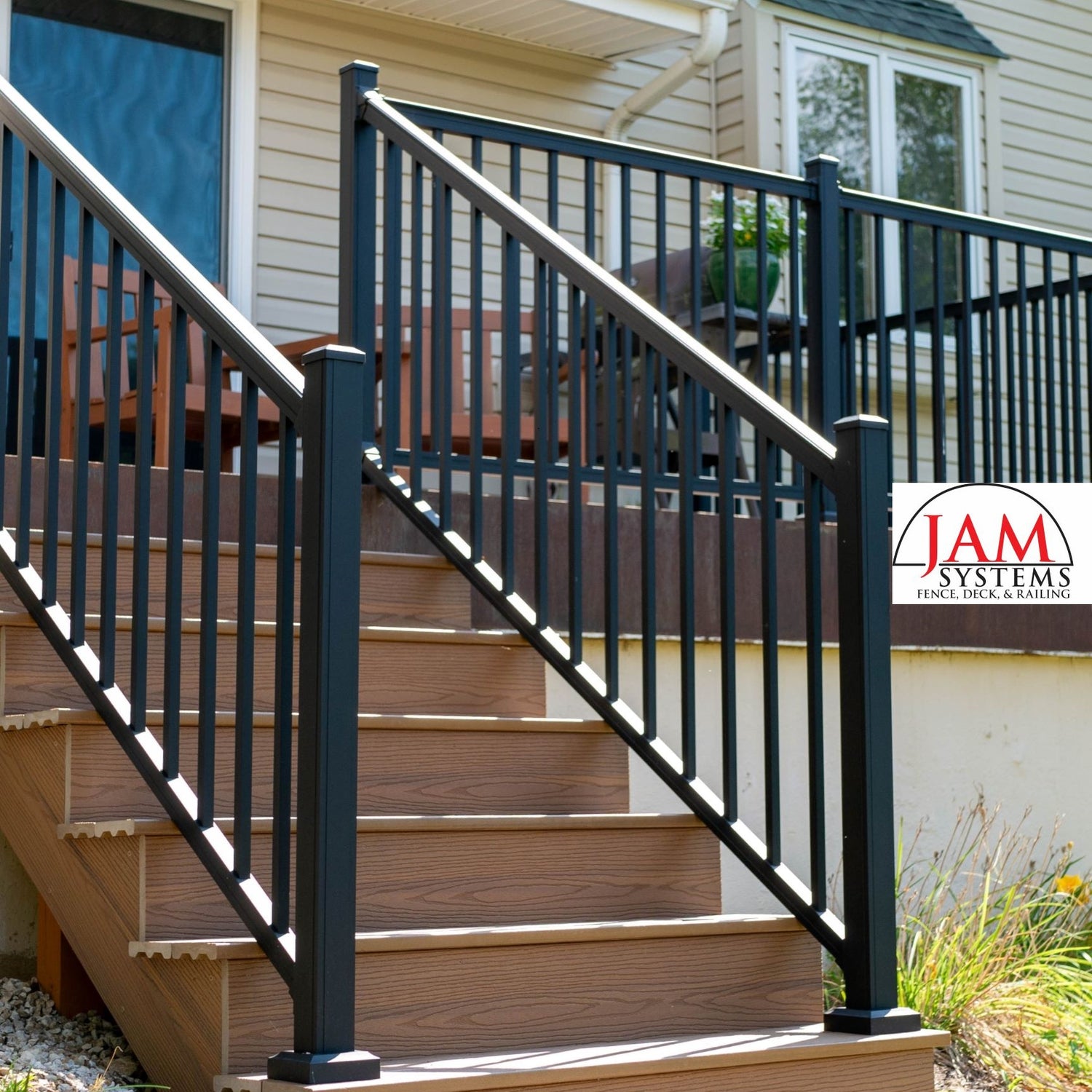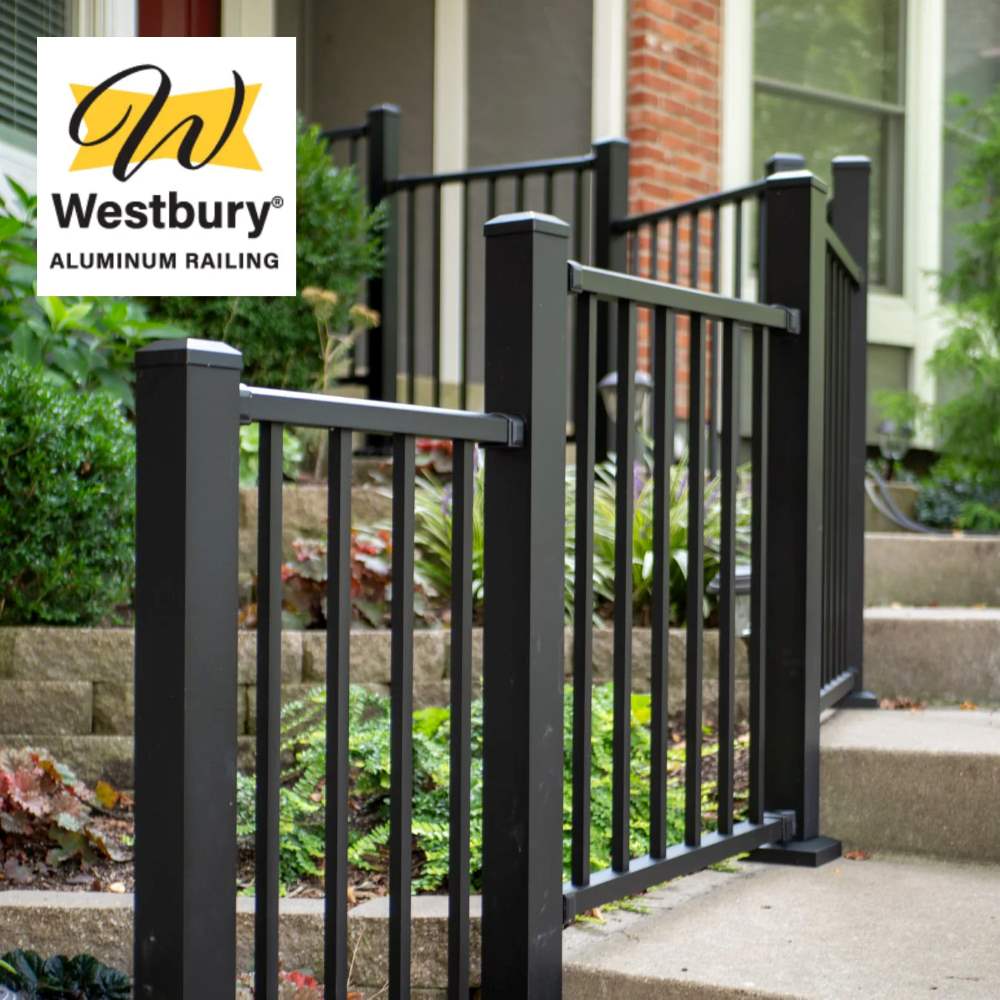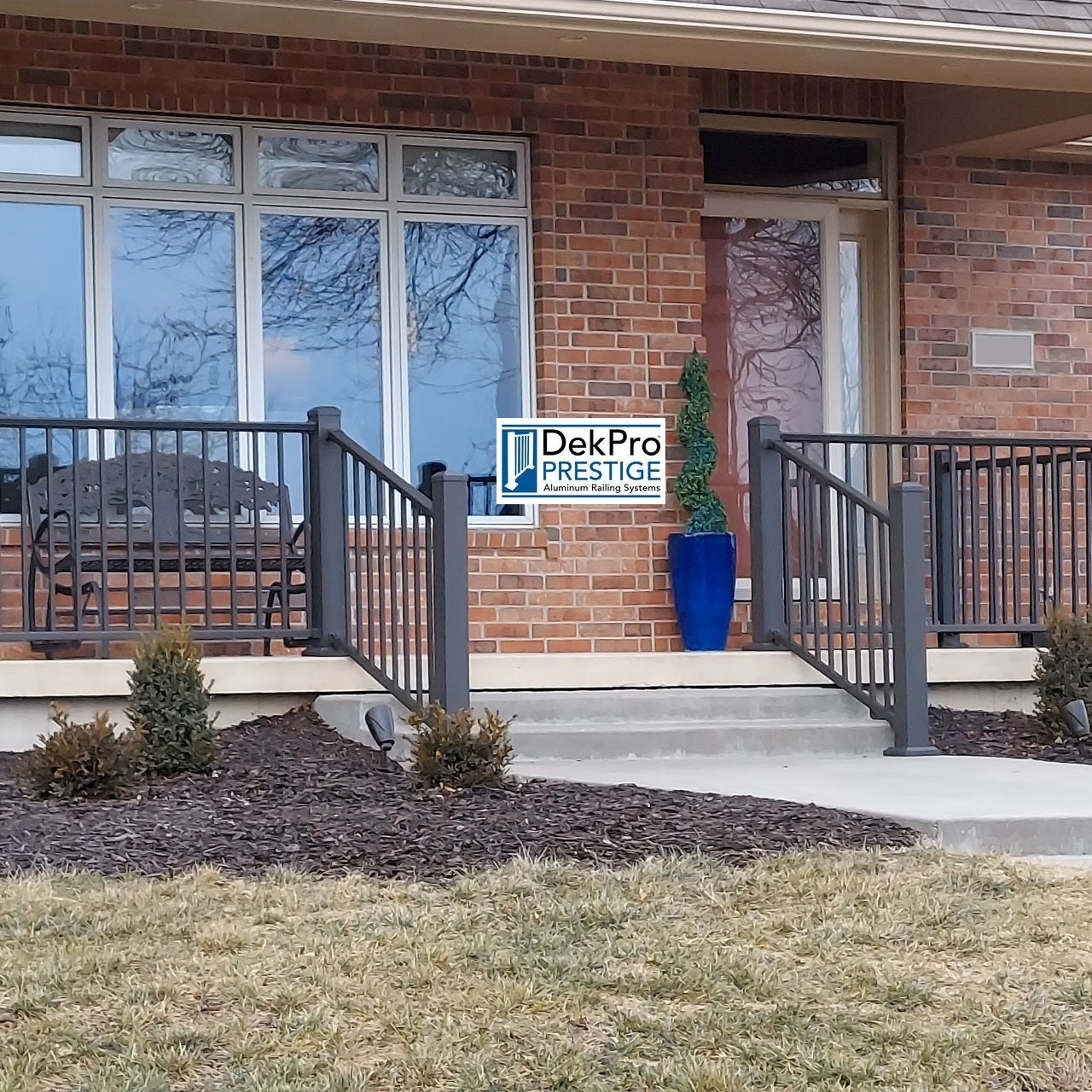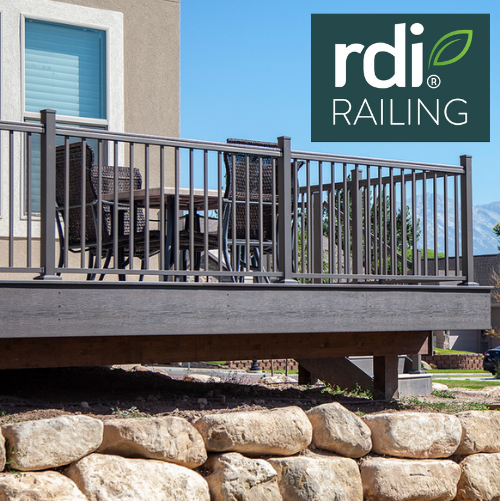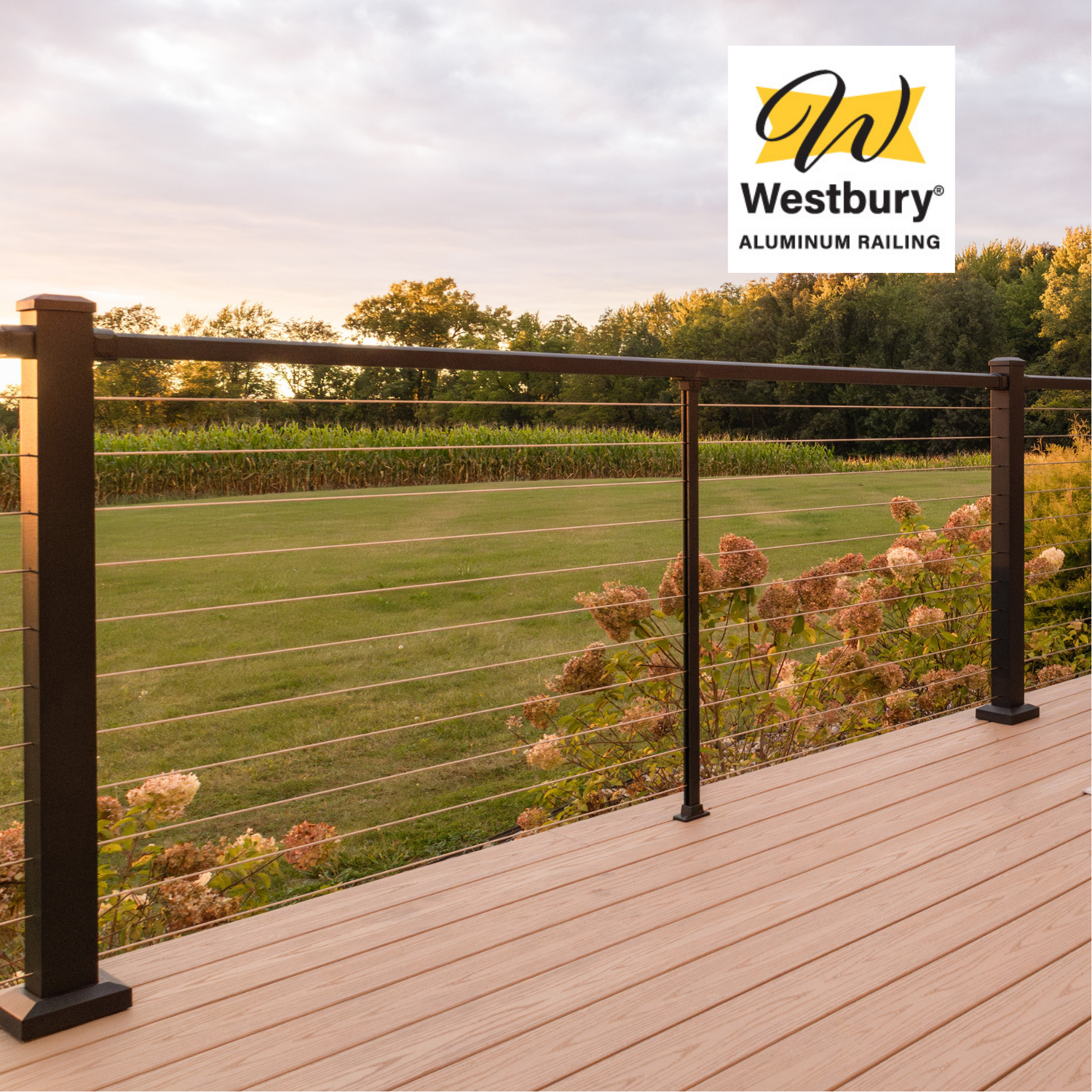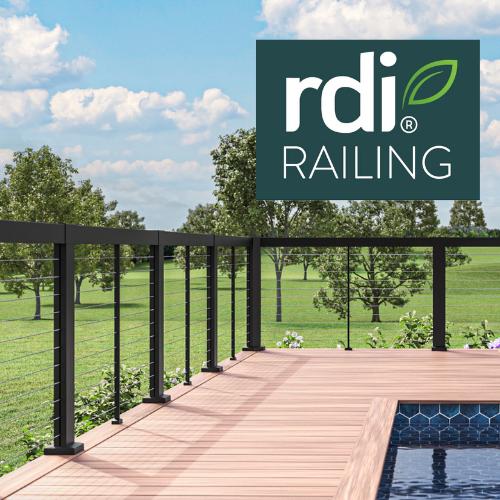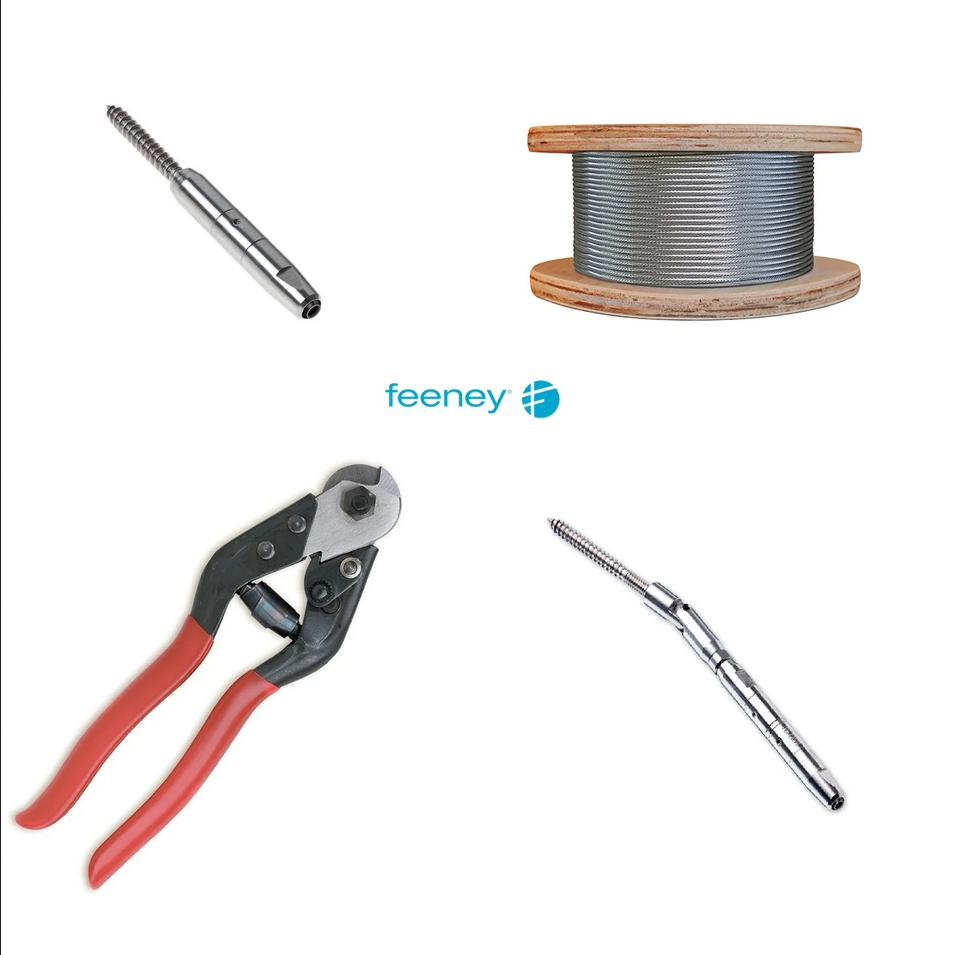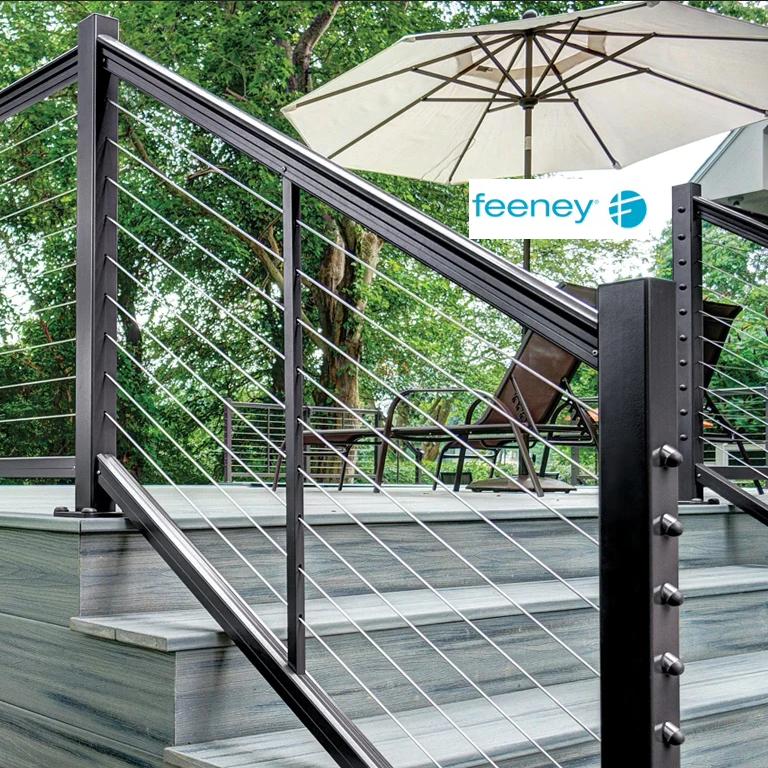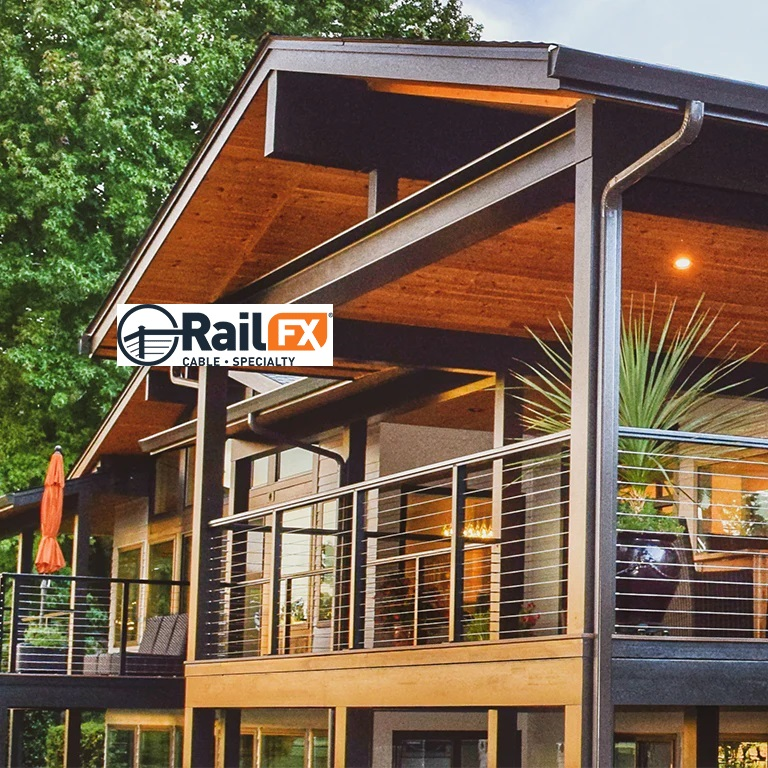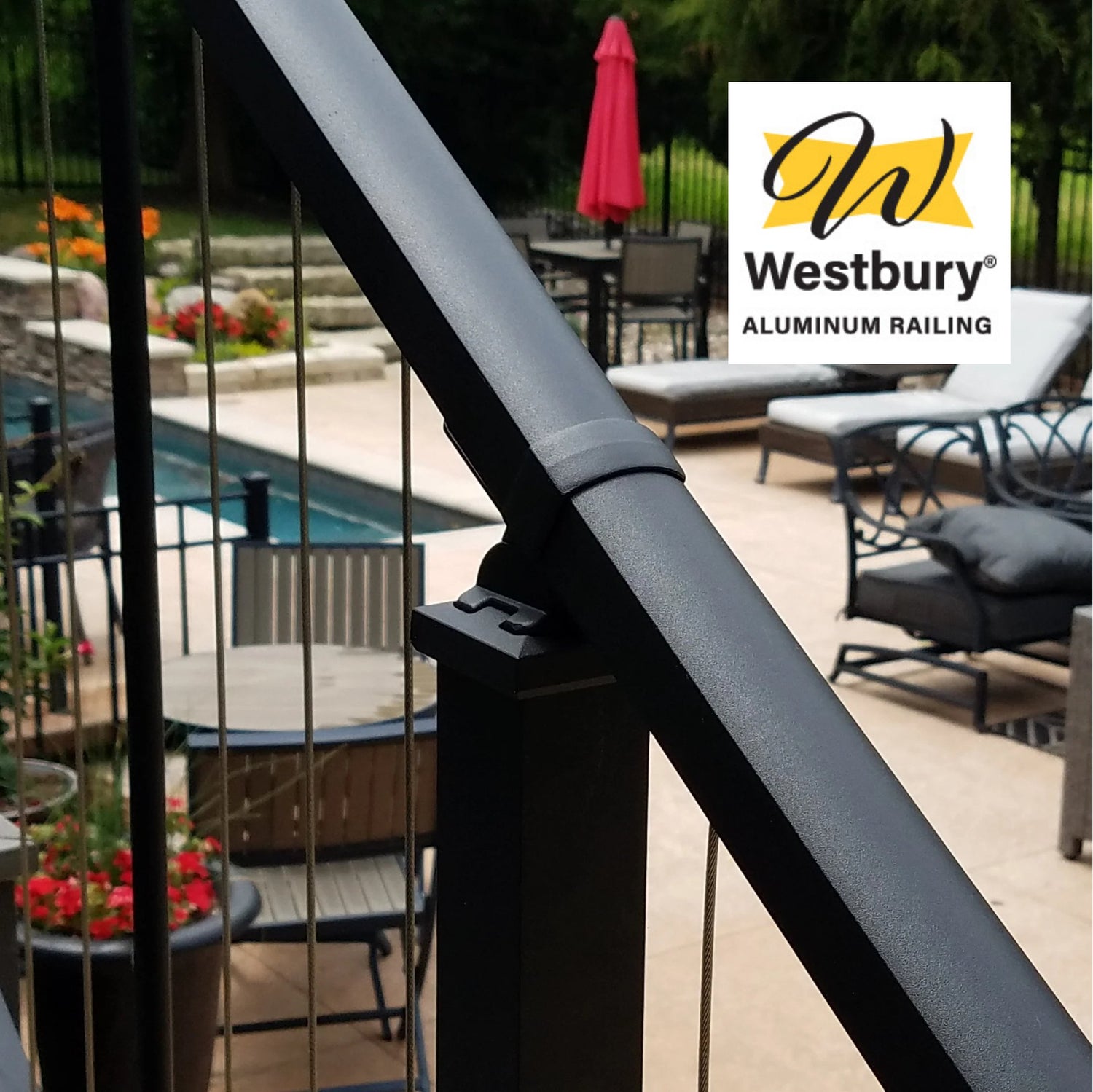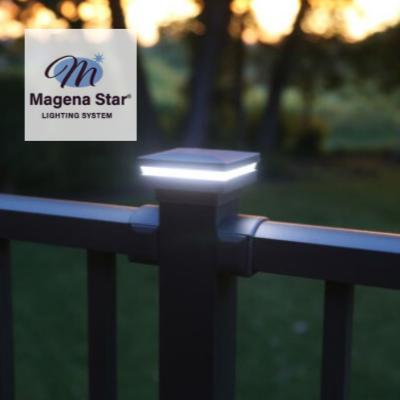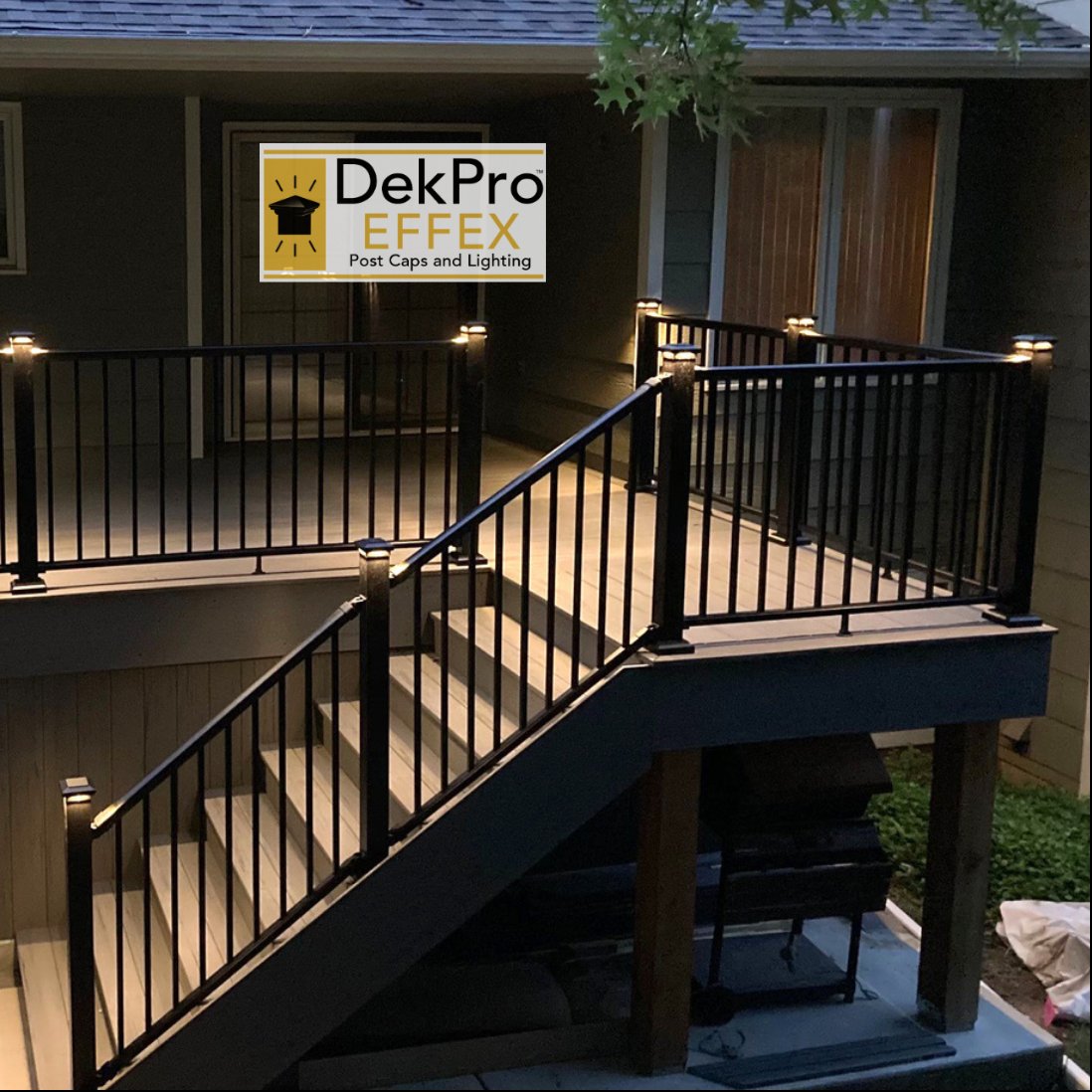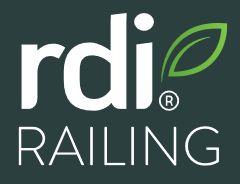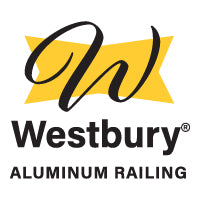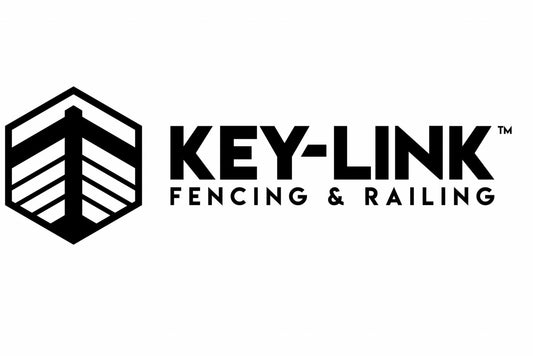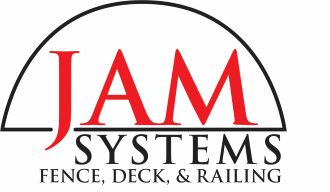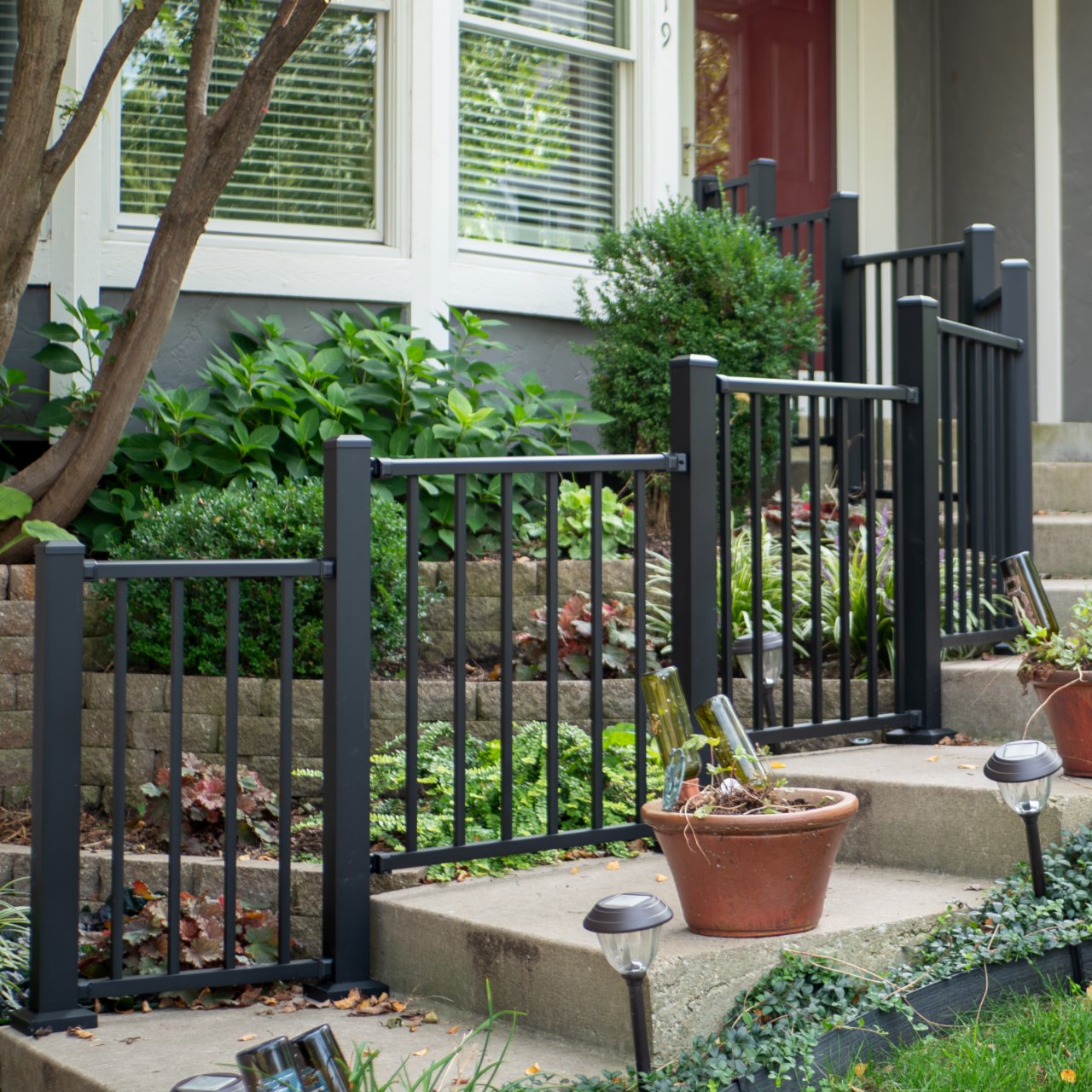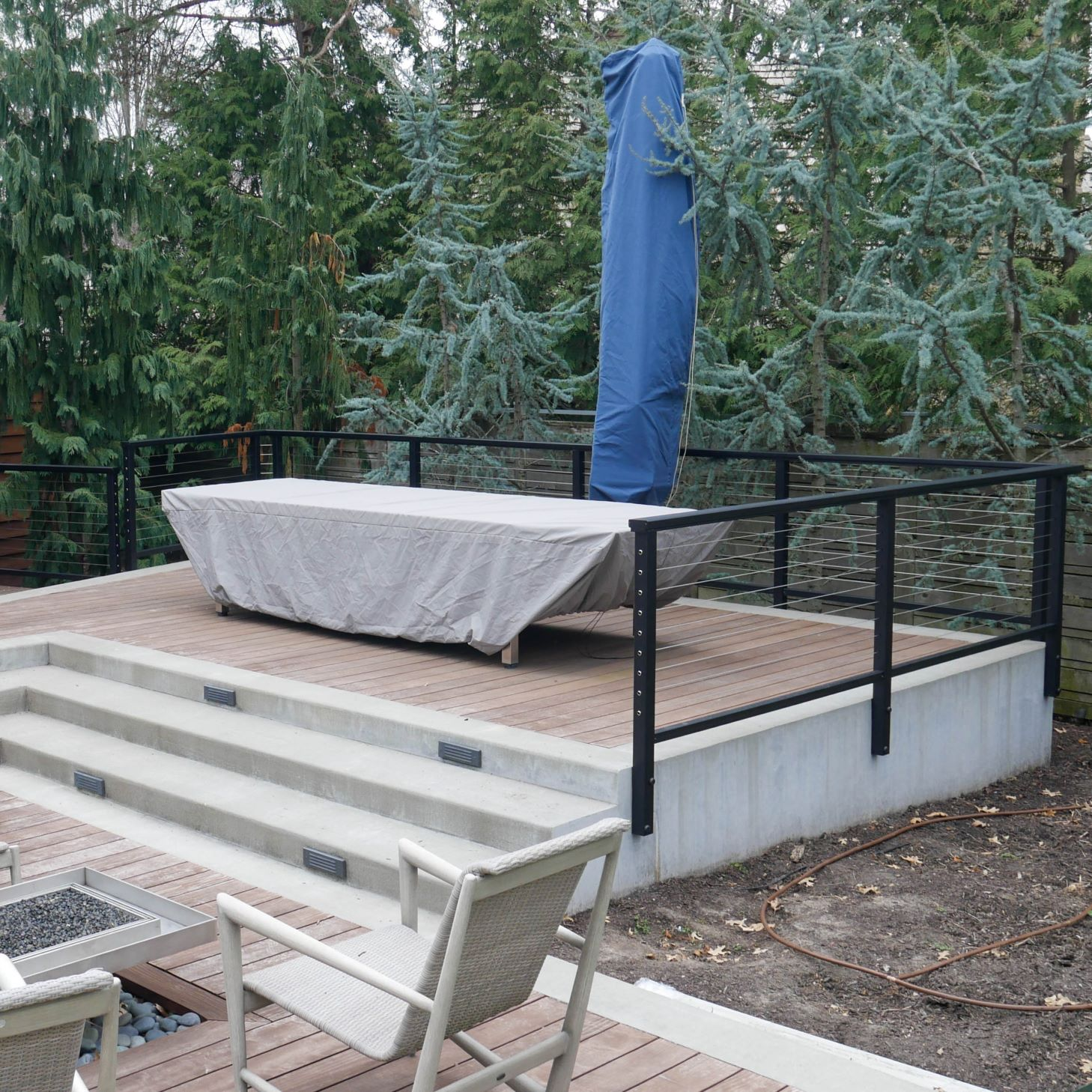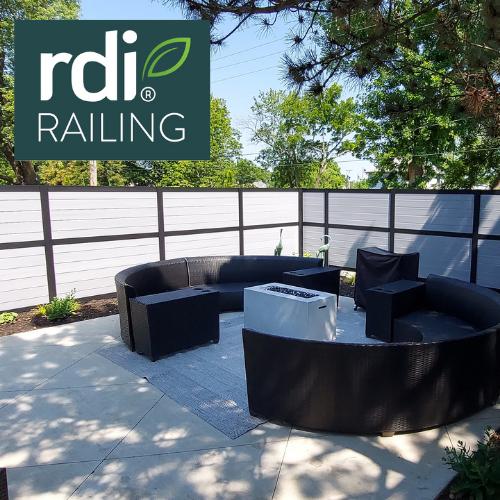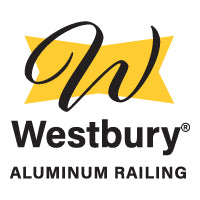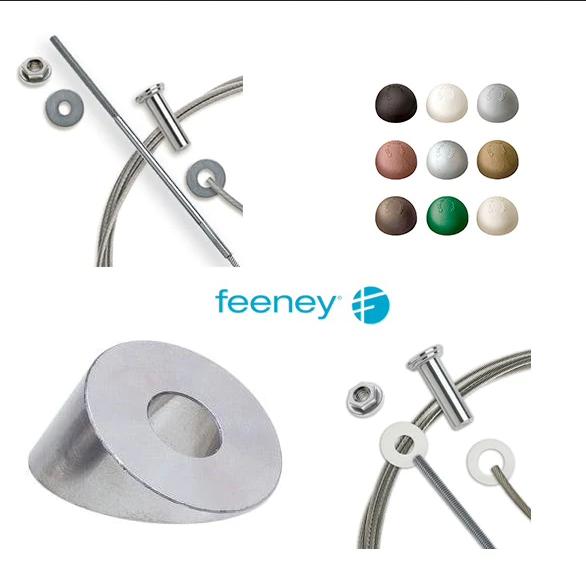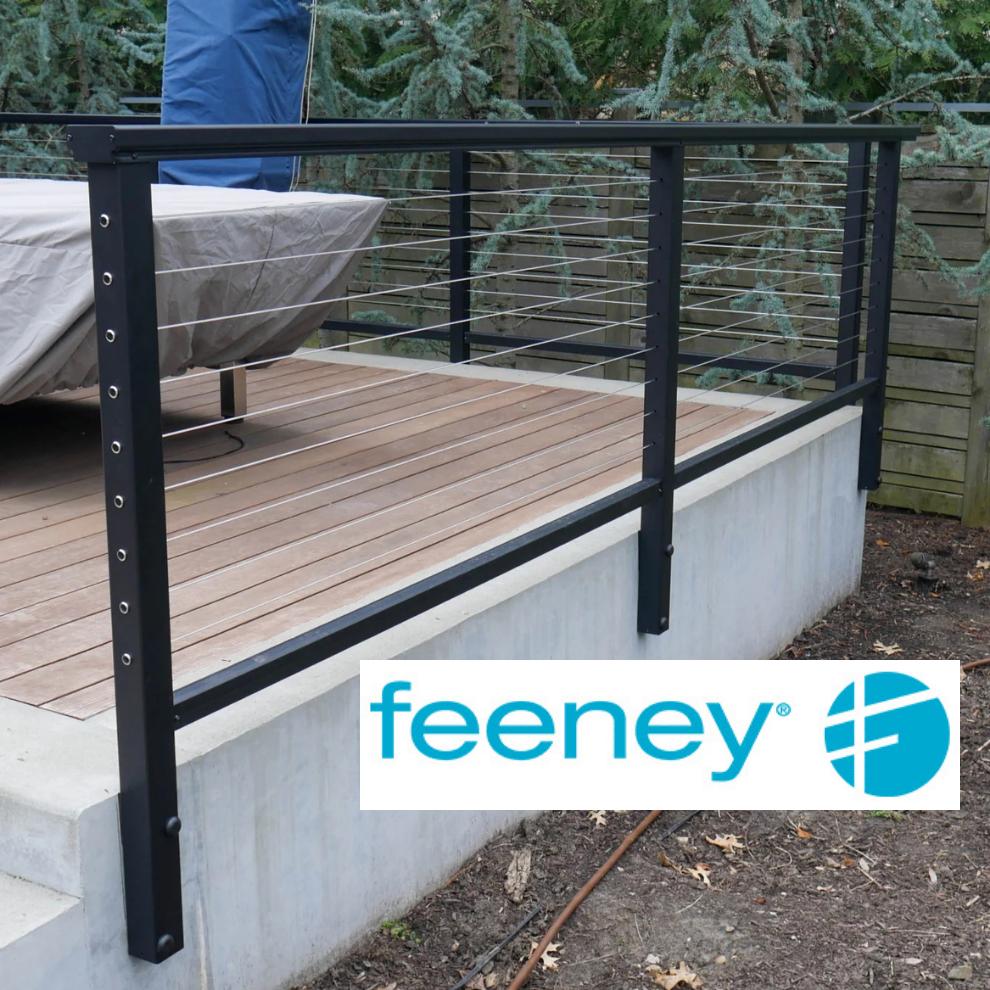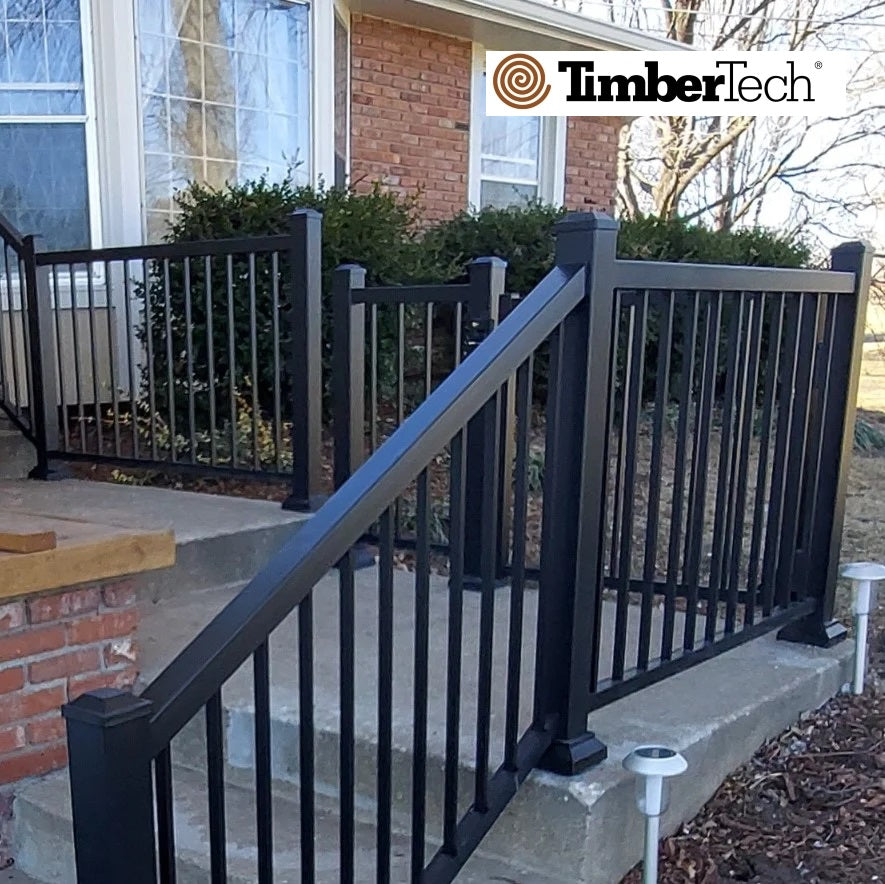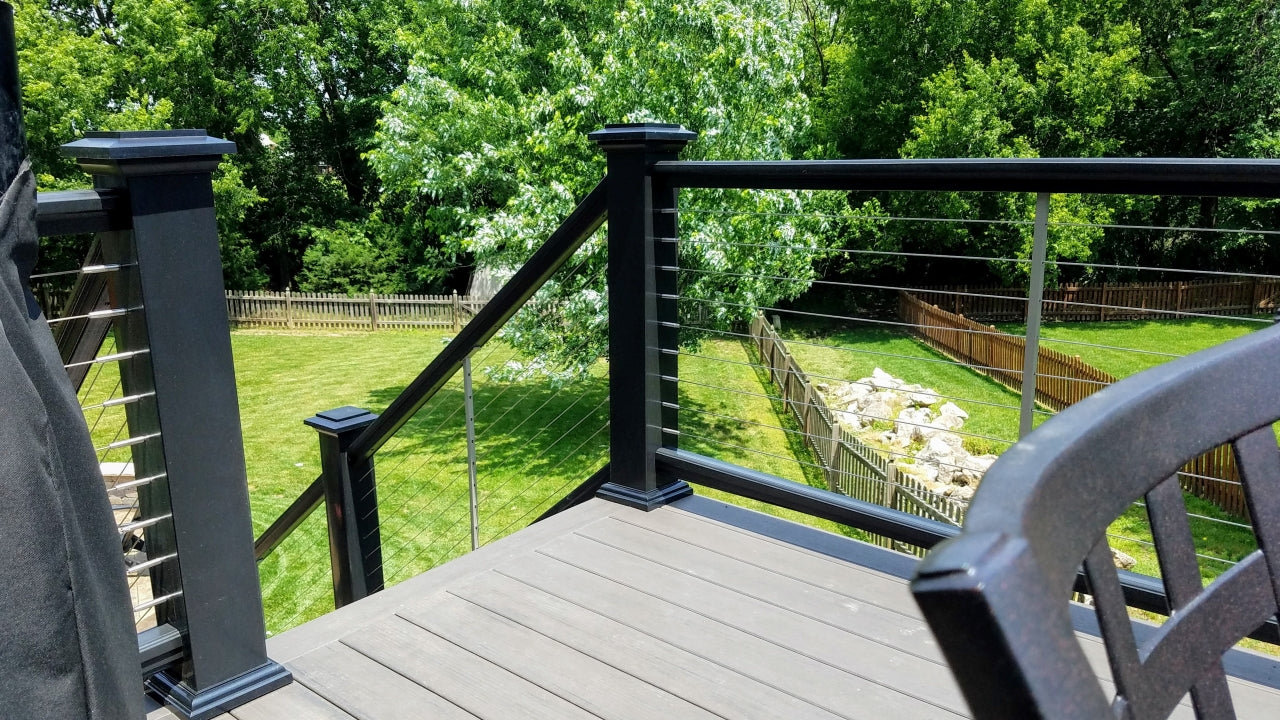Railing Categories
Explore our selection of deck railings, with post and rail kits. Infill options include all-aluminum railing with "aluminum baluster" infill, "vertical cable" infill, "horizontal cable" infill, "privacy" infill, and "graspable handrail".
Deck Rail Collections
Shop top selling, contractor approved, deck and porch railing collections:
Horizontal and Vertical Cable
Cable Railing can be divided into two distinct categories: horizontal cable runs that attach to posts, and vertical cable runs that attach to rails. Cable Railing typically utilizes metal supports, such as aluminum, but can also be used with composite railing. Both horizontal and vertical cable railing have their own advantages and disadvantages.
- Horizontal Cable Railing is one of the most popular looks, as it is easy to see through and maintain. It is aesthetically pleasing, but can be quite costly. Additionally, it can be difficult to accurately quote and it is essential to position posts correctly.
- Vertical Cable Railing is more akin to traditional railing types, combining aluminum posts with aluminum-reinforced vertical cable panels. Posts are installed first, then vertical cable rail kits can be installed between posts. Vertical Cable has a similar level of visibility as horizontal, but it is more difficult to climb and is often more affordable than horizontal cable.
Aluminum Railing
Aluminum railings are durable, are warrantied against defects such as warping or fading, and have an attractive price. The best-priced Aluminum Railings utilize horizontal top and bottom rails with vertical balusters or pickets between, however, other options such as 3-rail, and additional drink rail are available to add value and aesthetics. Aluminum Railing describes mostly the rail kits themselves, as many other styles of cable infill also use aluminum rails and posts. Below are the top Aluminum Railing Systems we carry. Be sure to look for railing brochures for all available components.
Lighting Collections
Lighting collections and systems are often brand specific, especially when it comes to posts caps, and matching colors. Low-Voltage LED lighting is an excelent way to light decks, rails, walk ways and patios.
ADA Handrail Collections
ADA Rail, round graspable rail, secondary rail, and handrail are all terms for a code-compliant single rail (usually round) that attaches outside of the post line to give a continuous graspable rail. Use in addition to guardrail, or use on it's on for non-guardrail applications.
Composite Railing
Composite type railing consists of extruded wood fiber composite coated with a cap stock for an effective and lasting handrail. Composite railings are typically more robust and fit well with traditional-style houses. TimberTech is one of the largest manufacturers in composite; however other products have done well in the market. Composite railing can incorporate a variety of infill options from standard ¾ inch balusters to horizontal cable railing, composite balusters, and even glass. Composite rails still need to attach to posts though. Composite posts used to be a popular product, but for several reasons including cost, weight and design, Composite sleeves are standard. Most composite sleeves are adapted to fit over a 4x4. If you are looking for the least maintenance, structural newel posts made from iron and high-density plastics allow for face mounting of posts and are easily sleeved. Other newel posts like cedar 4x4s and even treated 4x4s work well with composite sleeves. Once newel posts are installed, composite sleeves can be slid over, with the post skirt. The rails and infill can then be attached to the sleeve and post. Post Caps and foot blocks are then added to complete the railing.

Build Your Perfect Railing System
Create a safe and stylish deck rail, barrier rail, or guardrail railing, with railings rated for deck railing, patio railing, or stair railing! Choose from our wide selection of high-quality railing systems, with great options from the modern simplicity of aluminum rail, the visual appeal of cable railing, or the traditional looks of composite, we have the perfect solution to elevate your outdoor living space.
Why Choose a Railing System?
- Durability and Longevity: Deck railing systems or rated-railings are engineered to withstand the test of time and the elements. Crafted from premium materials like powder-coated aluminum and stainless steel, exterior railing systems resist corrosion, fading, and wear, ensuring years of worry-free enjoyment.
- Easy Installation: Simplify your project with our installation-friendly railing systems. Components are designed to work together seamlessly, and many systems offer cut-in-field options for easy customization.
- Versatile Designs: Create a railing system from deck railing kits that perfectly complement your style and needs. Choose from a variety of materials, colors, infill options, and post designs to achieve a truly custom look.
- Code Compliance: Rest assured that your railing system meets or exceeds IRC safety standards for both residential and commercial projects. We offer railing solutions in various heights (36" and 42") to comply with local building codes. (Always check with your local codes office for specific requirements.)
Explore Our Railing Collections:
- Aluminum Railing: The most popular choice for its exceptional durability, lightweight design, and low maintenance requirements. (Aluminum Systems)
- Cable Railing: Achieve a clean, modern aesthetic with horizontal or vertical cable infill options, often paired with sleek aluminum posts and rails. (Learn more about our Cable Railing Systems)
- Iron/Carbon Steel Railing: A cost-effective option that offers a classic look. Keep in mind that iron railings require regular maintenance to prevent rust.
- Composite Railing: Enjoy the traditional appeal of wood with the added durability and low maintenance of composite materials.
Customize Your Railing:
Our railing collections offer a wide array of components to create a truly personalized system:
- Rail Kits: Includes rails, balusters, and brackets for a complete railing section.
- Cable Rail Kits: Features rails, brackets, and pickets designed for horizontal cable infill (cable sold separately).
- Vertical Cable Rail Kits: Offers rails with pre-attached vertical cables and brackets for easy installation.
- Rail Panels: Provides pre-assembled rail and baluster panels, with or without hardware, for quick installation.
- Posts: Available in various styles and mounting options (surface mount and fascia mount).
- Post Kits: Includes posts with decorative flair, brackets, and caps.
- Cable Post Kits: Features posts with pre-drilled holes for cable railing, caps, and screw covers.
- Post Sleeves: Designed to slide over a standard 4x4 wood post for a seamless look.
- Rail Bracket Hardware: Provides all the necessary hardware for attaching rails to posts.
- Support Blocks: Ensures level railing installation on uneven surfaces.
- Caps and Skirts: Adds a finishing touch to your railing system.
- Low Voltage Lighting and Accessories: Enhance the beauty and functionality of your railing with integrated lighting.
Create the railing of your dreams with our versatile and high-quality components. Browse our collections today and start building!


